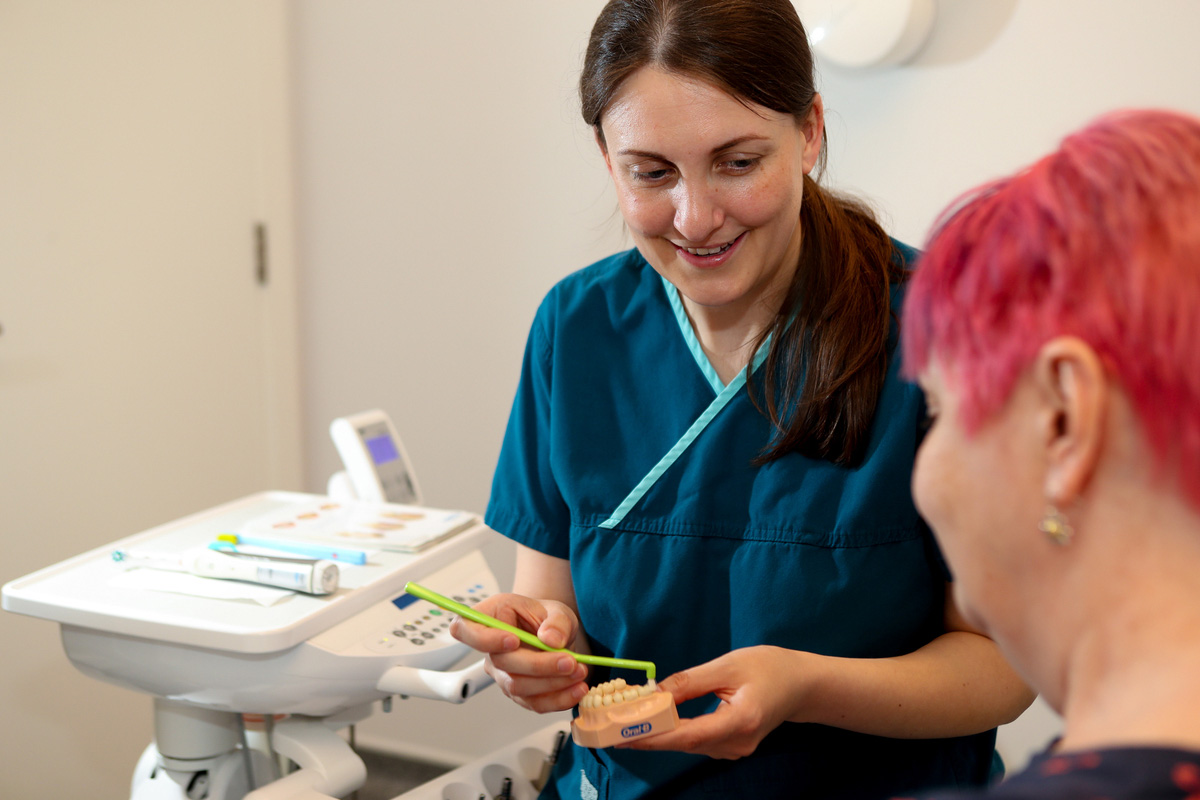Gum disease advice
Gum disease treatment
Your specialist periodontist will ask you to detail your symptoms and talk through your medical history. This will help to generate a better understanding of the problem and its magnitude. After a thorough examination it is likely x-rays will be taken to help determine the condition of the teeth and bone structure. In some instances, if the infection is caught early, then they may be able to provide treatment for gingivitis. Gingivitis is a mild form of gum disease that can be reversed by removing the plaque buildup and maintaining effective oral health at home. Gingivitis treatment is essential to ensuring your bacterial infection does not develop into periodontitis.

How is periodontal disease treated?
Having been diagnosed with periodontal disease by your practitioner, the next step is to discuss the process of how to treat gum disease effectively. If caught in the early stages, the treatment will involve a procedure called scaling and root surface debridement. This requires a special technique of removing the plaque and calculus from the pockets and root surfaces of the teeth. This initial course of treatment aims to stabilise the disease allowing for long term maintenance.
However, more advanced cases require detailed treatment. This can involve laser treatment, surgical treatment and/or medication depending on what is deemed the best treatment for each individual.
The treatment undertaken depends on the extent you are suffering with gum disease. Your dentist or specialist will discuss the necessary course of action for you before beginning with any treatment.
Different types of treatments
Deep Cleaning
Surgery
Antibiotics and other Medication
Prevent plaque buildup
Having detailed the many types of gum disease treatment available, it’s important to note the ways in which you can prevent periodontitis and other forms of infections. Adhering to the following measures will ensure effective oral hygiene.
- Attend your dental examinations as recommended by your dentist.
- Brush the gum line and each tooth twice daily (before bed and on one other occasion). Brush for at least 2 minutes. Ask which toothbrush is best for you and the technique you should use.
- Clean daily between the teeth before brushing, using floss in tight spaces and interdental brushes for larger spaces.
- Use a fluoridated toothpaste with at least 1350ppm Fluoride, spit out after brushing and do not rinse to maintain fluoride concentration
- Do not smoke
- Reduce the frequency and amount of sugary foods and drinks

